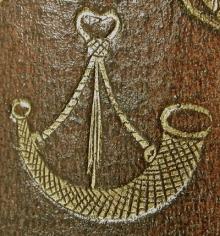Hunter, William (1718 -1783)
William Hunter was born at Long Calderwood in South Lanarkshire. After studying divinity at the University of Glasgow, he turned to medicine in 1737, apprenticing under William Cullen. Arriving in London, Hunter became resident pupil to William Smellie between 1741 and 1744, and was trained in anatomy at St George's Hospital, London, specialising in obstetrics. He followed the example of Smellie in giving a private course on dissecting, operative procedures and bandaging, from 1746. His courtly manners and sensible judgement helped him to advance until he became the leading obstetric consultant of London, and in 1764, he became physician to Queen Charlotte. He was elected a Fellow of the Royal Society in 1767 and Professor of Anatomy to the Royal Academy in 1768. That same year he built the famous anatomy theatre and museum in Great Windmill Street, Soho, where the best British anatomists and surgeons of the period, including his brother John, were trained. In 1770 he built himself a house in Glasgow fully equipped for the practice of obstetrics, and this formed the nucleus of the University of Glasgow's Hunterian Museum and Art Gallery. Hunter was an avid antique coin collector and the Hunter Coin cabinet in the Hunterian Museum contains one of the world's great collections. He was also a formidable book collector. When the famous book collection of Anthony Askew was auctioned off in 1774, Hunter purchased many significant volumes in the face of stiff competition from the British Museum. Hunter’s book collection is also housed in the Hunterian Museum. He died in 1783, aged 64, and was buried in London.

